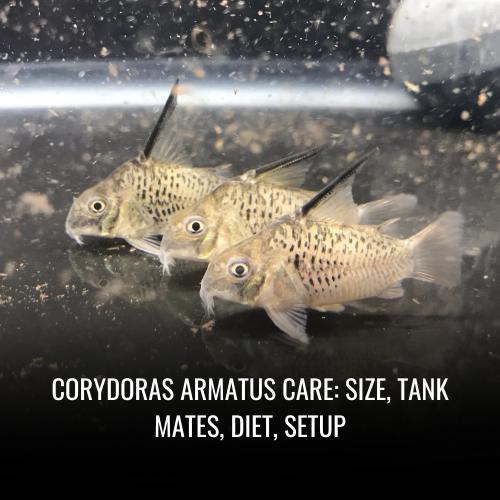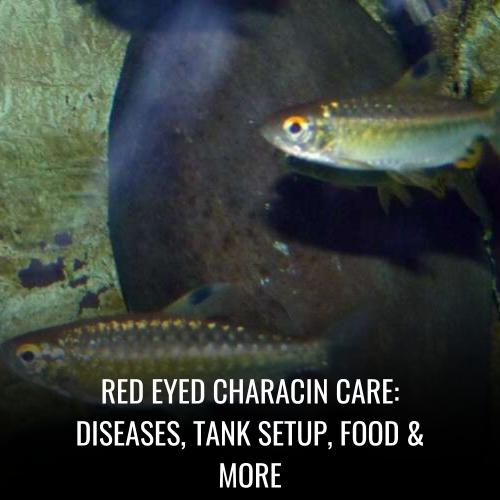Red Tail Barracuda Care: Tank Mates, Size, Diet & Setup
This post contains affiliate links. As an Amazon Associate, we earn from qualifying purchases.
Are you looking for a captivating and unique addition to your freshwater aquarium? The Red Tail Barracuda might just be the perfect choice! This striking fish is known for its distinctive red tail and sleek, predatory nature. Understanding the care and maintenance requirements of the Red Tail Barracuda is essential for providing it with a thriving environment.
Below is a table summarizing key details of the Red-tailed Freshwater Barracuda:
| Detail | Description |
|---|---|
| Scientific Name | Acestrorhynchus falcatus |
| Common Name | Red-tailed Freshwater Barracuda |
| Family | Acestrorhynchidae |
| Usual Size in Tanks | Up to 10.75 inches (27 cm) |
| pH Range | 5.5 – 7.5 |
| Water Hardness (dGH) | 5-19°N |
| Temperature | 73.4 – 82.4°F (23 – 28°C) |
| Reproduction | Egg-scatterer, free-spawning |
| Origin | South American river basins |
| Temperament (Own Species) | Peaceful to territorial |
| Temperament (Other Fish) | Semi-aggressive |
| Tank Placement | Middle to top |
| Lifespan | Can vary with care; typically 5+ years |
| Tank Size Requirement | 200 liters (52 gallons) min. |
| Filtration System | Required; High-capacity for cleanliness |
| Sexual Dimorphism | Minimal |
| Substrate Cleaning | Not necessary |
With the right care and environment, aquarium enthusiasts can enjoy the dynamic presence of these compelling predatory fish.
Behavior & Temperament
The Red-tailed Freshwater Barracuda, known scientifically as Acestrorhynchus falcatus, exhibits a series of intriguing and complex behaviors. As a highly predatory fish, it shows pronounced levels of aggression, especially when housed in community tanks with smaller or more docile species. The Red Tail Barracuda has a reputation for fin-nipping and can use its sharp teeth to cause harm to tankmates who venture too close or appear threatening.
Despite their potential for aggression, these fish can show schooling behaviors when kept in groups. This not only diminishes individual aggression but also simulates their natural environment, promoting healthy social interaction. An important consideration for aquarists is the grouping of these barracudas; solitary specimens might experience stress, which can suppress their natural behaviors and negatively influence their overall well-being.
To maintain a balanced temperament, it’s advisable to house the Red Tail Barracuda with larger fish that match its predatory nature or to keep them in a species-only tank to avoid conflicts. Careful observation and management of their behavior are crucial for creating a harmonious aquatic setting.
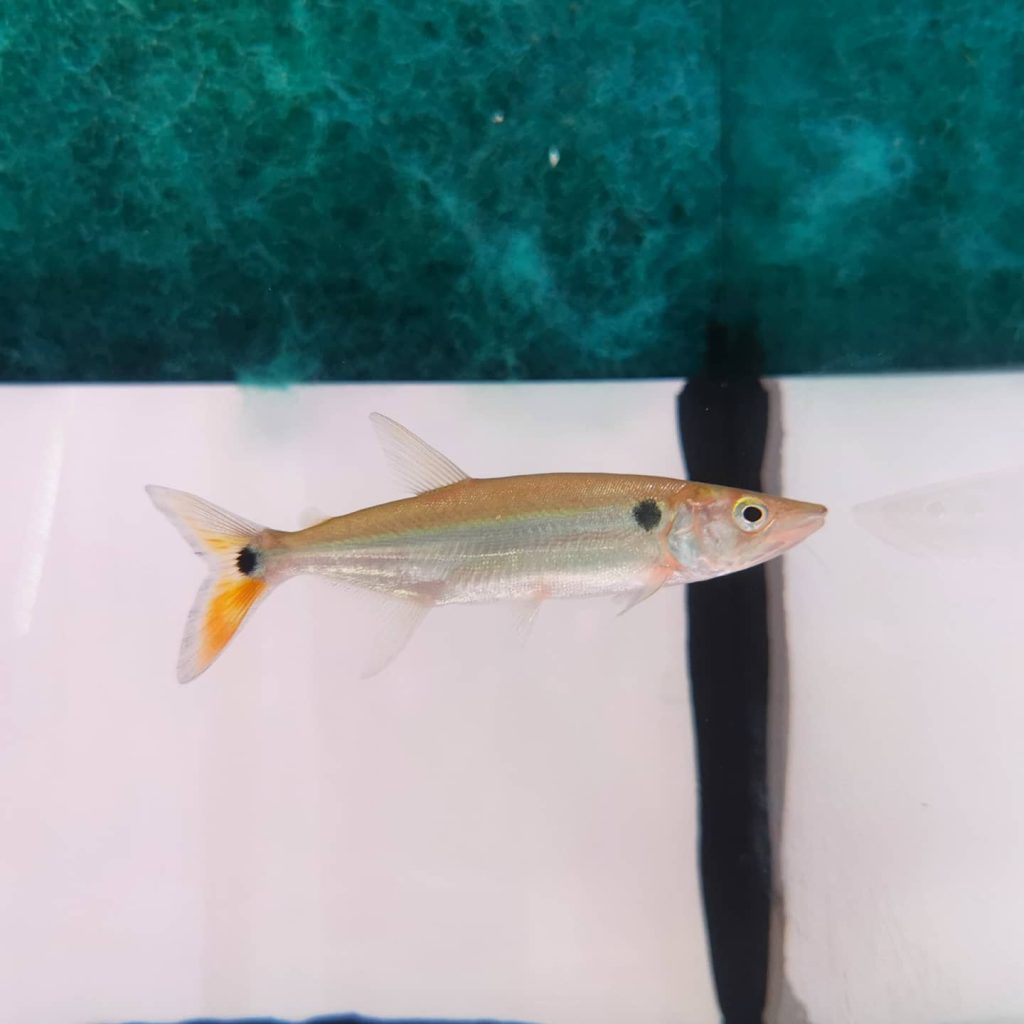
Scientific Name
The scientific name for the Red-tailed Freshwater Barracuda is Acestrorhynchus falcatus. This classification places it within the Acestrorhynchidae family, revealing its place in the evolutionary chain among freshwater fish. The species epithet ‘falcatus’ traces back to Latin, meaning ‘sickle-shaped,’ which aptly describes the unique marking near the base of their tail.
Average Size
In a captive setting, the typical size for an adult Red-tailed Freshwater Barracuda is between 12 to 15 inches, making ample tank space a critical factor. They experience rapid growth, often reaching about 5 inches within their first year, an indication of the need for a large aquarium to accommodate their continued growth.
Reports have documented wild individuals growing up to 18 inches, further underlining the necessity for spacious environments to allow their natural behaviors to flourish. With their considerable size, it’s evident that these barracudas are not suitable for small home aquariums.
Average Lifespan
With appropriate care, the Red-tailed Freshwater Barracuda has an average lifespan ranging from 8 to 10 years in captivity. Factors contributing to their longevity include high-quality water conditions, a nutritious diet, a well-sized tank, and minimizing stress.
Origin
Acestrorhynchus falcatus originates from the freshwater ecosystems of South America, especially the Orinoco River basin. This species has adapted to life in various countries, such as Venezuela and Colombia, thriving in the tropical climates these regions offer.
Behavior & Temperament
The Red-tailed Freshwater Barracuda, known as Acestrorhynchus falcatus, exhibits a diverse range of behavioral traits, particularly around its temperament. Understanding these nuances is crucial for providing a suitable habitat for these fish and maintaining a balanced aquarium.
Fin Nippers?
Red-tailed Freshwater Barracudas are not characterized by fin-nipping behaviors. These predatory fish are more attuned to hunting and feeding on live prey rather than engaging in fin-nipping, which is more typical of fish like tetras and barbs.
Aggressive?
As vicious predators, aggression is a core aspect of the Red Tail Barracuda’s behavior, especially during feeding and when defending territory. Their instinctual role as a hunter can manifest in competitive feeding that might extend to aggressive interactions with tankmates perceived as prey or rivals.
Friendly?
Despite their predatory nature, Red-tailed Freshwater Barracudas are not inherently hostile towards all tankmates. They have been known to show a more amiable side when in the company of peaceful, similarly-sized fish. They typically avoid aggression towards larger fish that they do not see as threats.
Schooling Fish?
In their natural environments, Red Tail Barracudas tend to form schools, a trait that translates into their captive life. Schooling is a significant aspect of their behavior, providing a sense of security and stress reduction.
Need to be in Groups?
Maintaining Red-tailed Freshwater Barracudas in groups is vital for their well-being, as this mimics their natural penchant for shoaling. Group living not only curtails stress and aggression but also encourages their inherent social structure to manifest. This group dynamic provides them with a protective environment and the comfort of a shared territory among their kind.
Can You Have Just One?
While it is physically possible to keep a single Red-tailed Freshwater Barracuda, it is not recommended from a behavioral and welfare perspective. Solitary barracudas may exhibit heightened stress levels, which can lead to increased aggression and potential health problems.
To promote their natural behavior and ensure their well-being, forming a group of Red Tail Barracudas is the most suitable approach for any aquarist considering adding these unique fish to their aquatic community.
Food & Diet
The Red Tail Barracuda naturally thrives on a carnivorous diet, predominantly feasting upon live prey that includes fish as well as various aquatic invertebrates. Their rigorous dietary needs are reflected in their carnivorous tendencies and their preference for live feedings.
Feeder Fish and Other Prey
In the wild, Red Tail Barracudas launch swift attacks on smaller fish species, showcasing their formidable predation skills. As such, they commonly receive feeder fish such as guppies or goldfish in aquarium settings to satisfy their instinctual chase and capture behaviors.
Besides live feeder fish, they can adapt to consuming earthworms, river shrimp, aquatic insects, and similar suitably sized prey, although pre-killed fish might be accepted by some individuals if trained.
Aquarists should consider breeding a separate tank of feeder fish to ensure a consistent and safe supply, minimizing the risk of disease transmission that might occur with purchased live feeders.
Nutritional Needs of the Red Tail Barracuda
Feeding live prey not only fulfills the Red Tail Barracuda’s predatory nature but also meets their nutritional requirements. These fish necessitate numerous feeding sessions each day to sustain their active metabolism and should be exclusively provided with meaty food items.
Dietary adjustments away from live food, such as incorporating pellets for carnivores, Tubifex, or chopped meats, should be executed with caution as their system is adapted to a specific kind of nutrient absorption found in live prey.
Do Eat Algae?
Contrary to some aquatic species, Red Tail Barracudas do not have algae as a staple in their diet. As solely carnivorous fish, their feeding forays do not usually include the pursuit of plant matter.
Do Eat Shrimp?
Shrimp are indeed a part of the natural diet for Red Tail Barracudas. These marsupials provide an excellent source of protein and are highly nutritious. In captivity, shrimp can be given as live, frozen, or freeze-dried to both stimulate the fish’s natural hunting instincts and supplement their diet with vital nutrients.
Do Eat Planaria?
Planaria, the small flatworm organisms that sometimes appear in freshwater aquariums, do fall prey to these predatory fish. Consuming planaria can help round out the dietary needs of Red Tail Barracudas, providing essential proteins and contributing to a more diverse and balanced captive diet.
Do Eat Mosquito Larvae?
Mosquito larvae are a natural part of the Red Tail Barracuda’s diet in the wild, serving as a rich source of protein. In a home aquarium, feeding mosquito larvae is not only nutritionally beneficial but also replicates the natural feeding patterns of these fish, helping to foster good health and vigor. Offering mosquito larvae is an excellent way to satisfy both nutritional and behavioral needs.
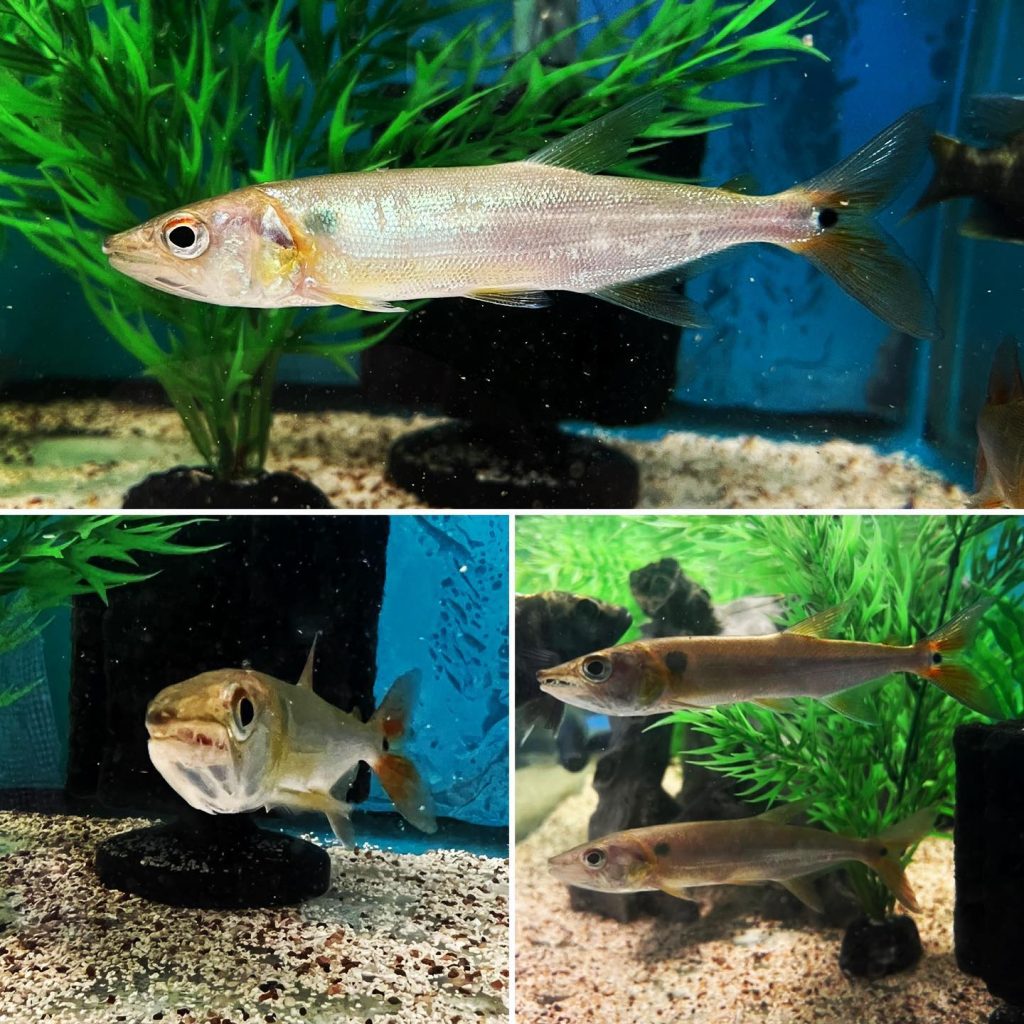
Do Eat Their Babies?
Cannibalistic by nature, Red Tail Barracudas have been observed to eat their offspring if adequate precautions are not taken. It’s imperative for breeders to either remove fry from the main tank or provide an environment replete with ample hiding spaces to protect them. Without these measures, juvenile barracudas are at substantial risk of being consumed by adult members of the species.
Do Eat Bloodworms?
Bloodworms are a favored food source for many predatory fish, including Red Tail Barracudas. The high protein content of bloodworms makes them a perfect fit for this predator’s diet. Regular inclusion of bloodworms in their feeding regime can help maintain the health and vibrant colors of these beautiful fish. They are relished by the barracudas and contribute to a balanced dietary profile, ensuring these active fish remain in peak condition.
Sexing: male vs female
Sexing Red-Tail Barracudas can be a tricky endeavor, but a careful observer can discern males from females by noting a few key physical attributes. When comparing the two, females exhibit a plumper body shape with a more rounded profile, especially noticeable from above. This contrast is due to the males’ streamlined, slender form that extends into a more elongated outline.
Examining the anal fin provides further evidence, as males boast a pointed and elongated fin in contrast to the broader and more rounded fin of females. Mature males may display small, visible hooks or extensions on their anal fins—features absent in females. Lastly, the ventral area behind the pectoral fins serves as a visual sexing clue; females present a convex or bulging appearance, while males feature a flatter and less pronounced profile.
Understanding these distinctions is crucial for breeders and enthusiasts aiming to identify the sexes of their Red Tail Barracuda.
| Sex | Body Shape | Anal Fin | Ventral Area |
|---|---|---|---|
| Male | Streamlined and slender with an elongated look | Pointed and elongated, with possible hooks or extensions | Flatter and less pronounced |
| Female | Plumper and rounder, especially when viewed from above | Broader and more rounded | More convex or bulging |
Tankmates and Compatibility
Despite its reputation as a formidable predator, with sharp teeth and a fish-eating nature, the Red Tail Barracuda can be a part of a well-structured community tank under the right conditions.
When creating a compatible aquatic community for the Red-tailed Freshwater Barracuda, aquarists must carefully consider the size and temperament of both the barracuda and its potential tankmates.
Ideal companions are typically larger fish that present no risk of becoming prey — those too large for the barracuda to swallow but peaceful enough to coexist without conflict.
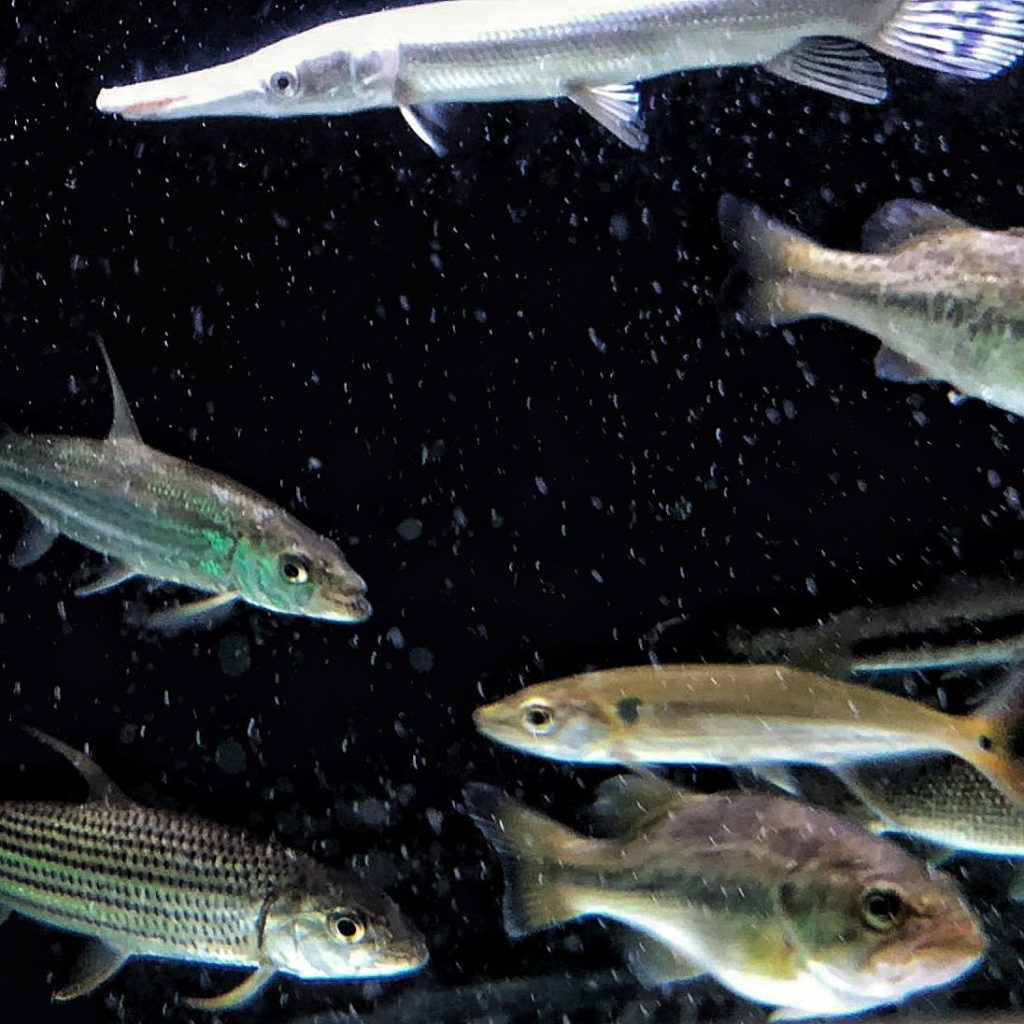
Community Fish and Companion Fish
To foster a tranquil environment, it is best to introduce the barracuda to a tank with placid fish and avoid those with aggressive or highly competitive tendencies. Certain medium-sized species make excellent companions, including characids such as Acarichthys heckelii, medium-sized doradid, and loricariid catfishes. Even Geophagus spp., known for its peaceful demeanor, can share space with the Red-tail Barracuda in harmony.
Where juvenile barracudas show a propensity for schooling, they are compatible with conspecifics and display less aggression. It’s beneficial to maintain them in groups, ideally with four or more individuals, which helps mitigate cannibalistic behavior and establish a balanced social hierarchy. An important note for aquarists: ensure that all barracudas in a group are of similar size to avoid any risk of cannibalism.
Avoiding Aggressive or Predatory Tankmates
Not all fish are suitable companions for the Red-tailed Freshwater Barracuda. Smaller fish, such as feeder fish or free-spawning fish, should be avoided, as the predatory instincts of the barracuda will likely lead to them viewing these little fellows as a meal rather than a fellow tankmate.
Likewise, the inclusion of larger, more aggressive fish — such as certain types of cichlids — is not advisable, as they may provoke or compete too fiercely with the barracuda. The delicate balance of the barracuda’s temperament means that tankmates should neither be too passive to avoid being eaten nor too belligerent, creating havoc for the barracuda.
Maintenance and Care
Maintaining a healthy environment for the Red-tailed Freshwater Barracuda (Acestrorhynchus falcatus) requires a careful balance. These agile swimmers need a well-structured tank setup with minimal decorations to maximize swimming space, reducing potential stress.
A naturalistic aquarium setup with a sandy substrate, alongside pieces of leaf litter and driftwood branches, will make them feel at home and provide enrichment. While optional, live aquatic plants such as Microsorum pteropus (Java fern), Taxiphyllum barbieri (Java moss), or Anubias spp. can be included to mimic their native habitat without cluttering their swimming areas.
For those with deeper tanks, consider adding emergent branches or plants to the tank. This species has a tendency to jump, so ensure that the tank has a tightly fitting cover to prevent any unintentional escape attempts. A diverse set-up like this, paired with vigilant upkeep, encourages the natural behavior of the Red-tailed Freshwater Barracuda and maintains their overall wellness.
Monitoring Water Quality
Regulating water parameters is crucial for the health of your Red-tailed Freshwater Barracuda, whose well-being is closely linked to their environment. The temperature in their tank should be sustained between 22 – 28 °C, reflective of their South American roots. Water hardness levels should remain between 18 – 215 ppm, catering to their need for specific mineral content in the water.
A comprehensive filtration system is indispensable for processing the waste products of these predatory fish. External canister filters or a sump system are recommended to manage the water quality effectively.
It is essential to monitor ammonia, nitrite, and nitrate levels regularly, as these fish are sensitive to changes in water chemistry, and an imbalance can be detrimental. Employ a reliable water testing kit and maintain consistency in pH levels to reduce stress and promote the fish’s longevity. Active management of the tank’s water quality, along with robust filtration, is vital in maintaining the health of your Red-tailed Freshwater Barracuda.
Dealing with Organic Pollutants
Organic pollutants present a significant challenge in the barracuda’s aquarium and can stem from leftover food, decaying plant matter, and fish excrement. To prevent these pollutants from reaching harmful levels, engage in weekly water changes of 30-50%, depending on the tank’s bioload. This not only dilutes the concentration of pollutants but also helps stabilize water chemistry.
Efficient filtration is paramount; utilizing biological and mechanical filters can aid in the removal of these organic materials. Be mindful of tank stocking levels, feeding practices, and routine maintenance to minimize the production of pollutants. Testing kits should be used to detect any spikes in ammonia, nitrite, or nitrate levels and address them promptly to sustain a healthy environment.
The inclusion of live plants can offer a natural solution for managing nitrates, as they absorb these compounds for their growth. However, it is essential to keep a balance and not overcrowd the tank with plants, as decay can add to organic waste. Maintaining a clean and well-managed habitat will ensure the Red-tailed Freshwater Barracuda thrives and exhibits its intriguing behaviors.
Breeding and Reproduction
Breeding the Red-tailed Freshwater Barracuda, or Acestrorhynchus falcatus, presents a unique challenge for aquarists. In their natural South American habitats, these fish reproduce during the rainy season, engaging in a free-spawning process.
Both males and females release their gametes into the open water, resulting in the production of numerous fry. While aquarium observations have documented Red Tail Barracudas showing courtship and spawning behavior, it is rare to achieve successful breeding in captivity.
Efforts to breed these fish in a controlled environment involve segregating males and females and then conditioning them with high-quality live foods. The conditioning process aims to replicate the fish’s natural diet before reproduction, thereby improving their readiness to spawn.
The next critical step is placing them into a specifically prepared large spawning tank, which should be filled with aged, clean water to provide the best conditions for breeding.
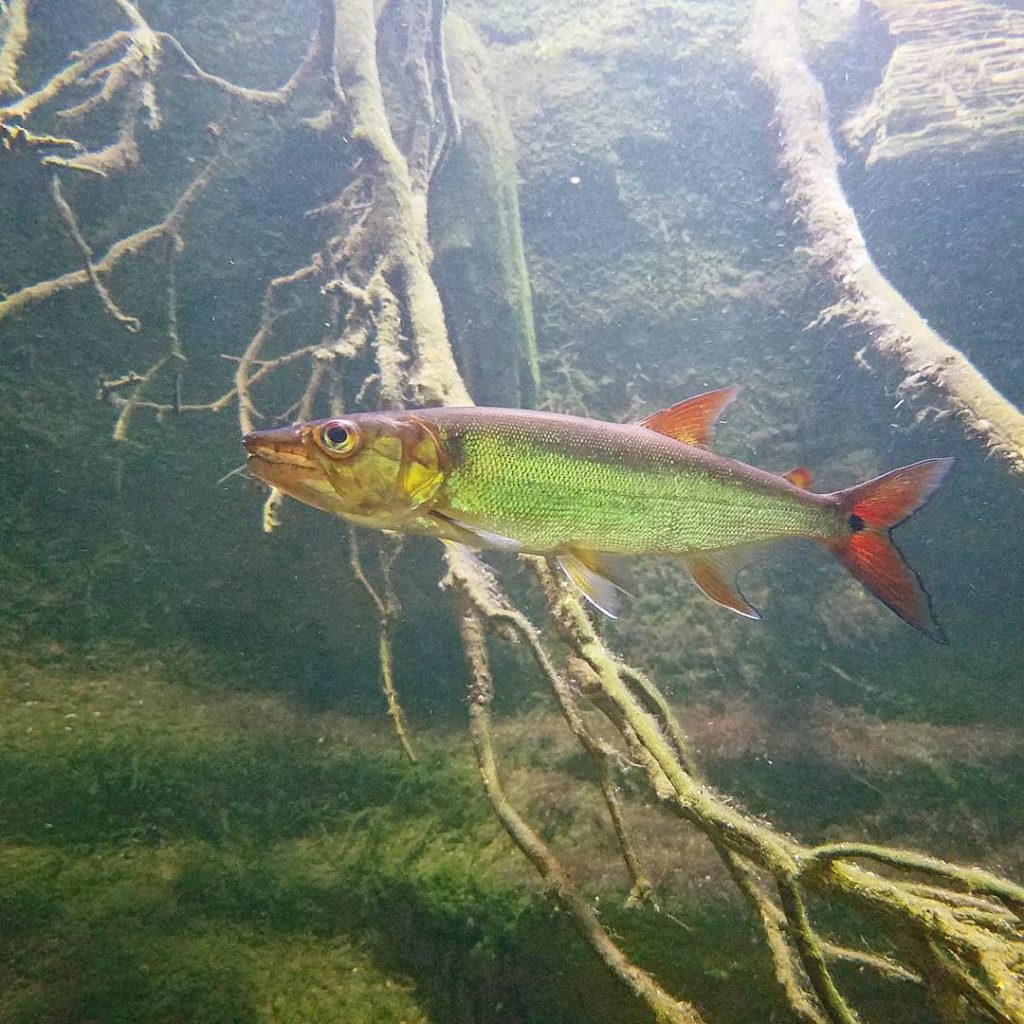
Free-spawning Behavior and Fry Care
After the release of eggs and sperm into the water, the eggs become fertilized. The fry, once hatched, are left to their own devices without any subsequent care from the adult Barracudas, which makes their survival in the wild a rather perilous journey.
In an aquarium setting, to boost the chances of fry survival, the provision of dense vegetation or the inclusion of floating plants is recommended. Such foliage serves as a shelter and allows the delicate fry to hide from potential predators, including their own species, as they are prone to cannibalism.
The Red Tail Barracuda fry are exceedingly small upon hatching and initially depend on very tiny food sources, such as infusoria. As they grow, the fry can gradually progress to larger food items like baby brine shrimp or microworms.
It is essential to keep the fry in a separate rearing tank, away from adult fish, to ensure they do not become a meal themselves.
Providing the Right Conditions for Breeding
Creating optimal conditions for the spawning of Red Tail Barracudas involves a dedicated approach. The ideal spawning tank setup includes:
- The separation of males and females pre-spawning, and their conditioning with nutritious live feeder fish.
- A spacious and adequately aged tank with dense plant life to simulate their natural breeding environment.
- A darkened environment, is achieved by covering the tank to trigger natural spawning behaviors, akin to the murkier waters during the rains in their native range.
- A temperature control system, gently increasing the water temperature to around 80°F (27°C), to further incite the breeding process.
- The removal of the parents immediately following spawning to protect the eggs from being eaten.
For each of these steps, a table or list can help aquarists track progress and ensure no stage is missed:
| Step | Action | Purpose |
|---|---|---|
| 1 | Separate and conditioned sexes | Increase readiness for spawning |
| 2 | Prepare spawning tank | Mimic natural habitat |
| 3 | Darken environment | Simulate rainy season conditions |
| 4 | Gradually raise the temperature | Encourage spawning behavior |
| 5 | Remove parents post-spawn | Prevent egg predation |
These meticulously monitored breeding conditions give the Red Tail Barracuda the best chance of successful reproduction in captivity. However, the rarity of achieving such a feat makes it a pursuit for the dedicated and patient aquarist.
Tank Setup
When setting up a tank for Red Tail Barracudas, it is important to provide them with the appropriate environment to thrive. These active and nervous fish require a spacious tank with good filtration and some current. Here are some guidelines to create a suitable tank setup for Red Tail Barracudas:
Tank Size: Red Tail Barracudas may not grow very large, but they require ample space to swim. A minimum tank size of 55 gallons is necessary to keep them in good condition.
Filtration: Due to the amount of waste produced by predatory species like Red Tail Barracudas, efficient filtration is a must. It is recommended to install one or more external canister filters and/or a sump system. This will help maintain water quality and provide a healthy environment for the fish.
Water Conditions: Red Tail Barracudas prefer clean, aged water. The temperature should be maintained between 75.0 to 82.0° F (23.9 to 27.8° C). The pH level should be in the range of 6.0-7.5, and the hardness should be between 8-15 dGH. Regular water changes of 30 to 50% every other week are necessary to keep the fish happy and healthy.
Aquarium Decor: Red Tail Barracudas need both open swimming space and areas to feel secure. It is recommended to provide tall plants around the perimeter of the tank to help create a sense of security. However, the swimming area should be open and unobstructed to accommodate their active nature. It is important to ensure that the aquarium has a good-fitting cover, as these fish have been known to jump.
Substrate and Lighting: Red Tail Barracudas do not have specific requirements for the substrate. A sandy or bare bottom can be used, and to create a natural effect, a few handfuls of leaf litter and some driftwood branches or roots can be added. Lighting needs for this species are moderate, and it can be tailored to the plants being used in the tank.
Overall, setting up a tank for Red Tail Barracudas requires attention to detail and consideration of their natural habitat. Providing them with ample space, suitable water conditions, and appropriate decor will help create a healthy and stimulating environment for these beautiful fish.
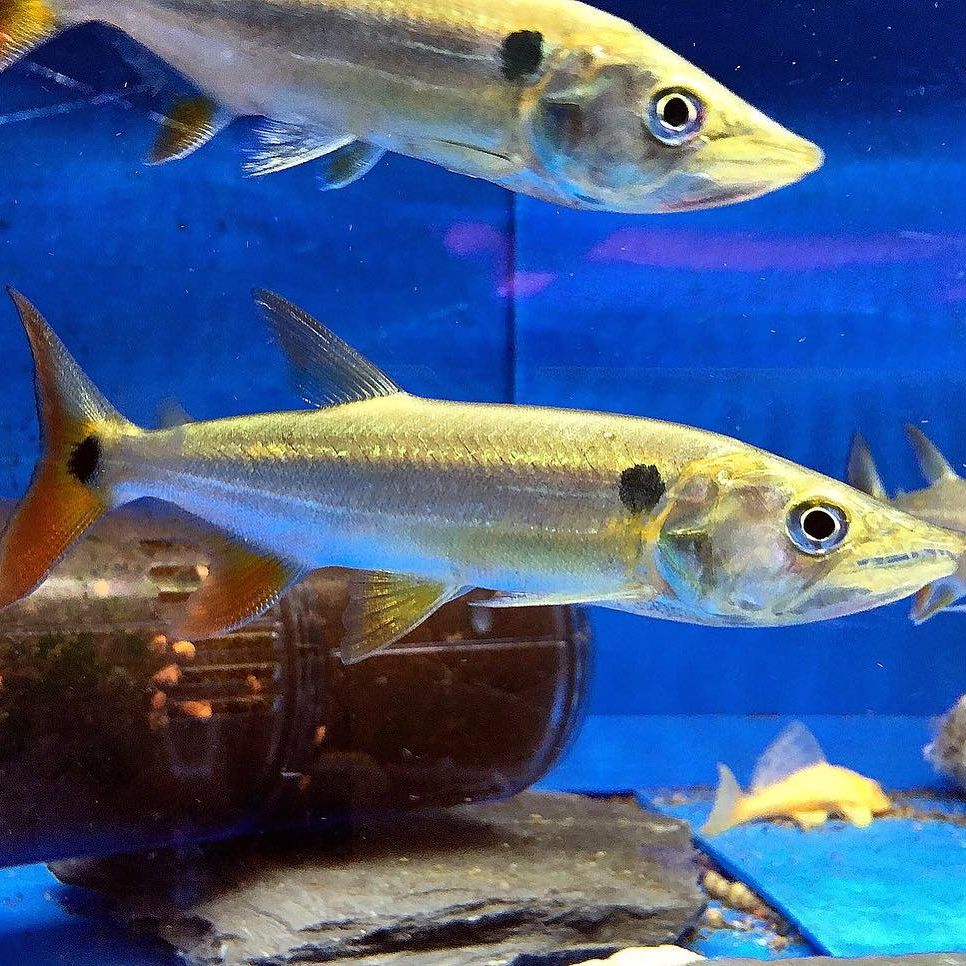
Common Diseases & Prevention
Red Tail Barracuda are susceptible to various diseases such as skin flukes, parasitic infestations, ichthyobodo infection, and bacterial issues. To mitigate these risks, there are several measures aquarists can take:
- Quarantine Live Food: Always quarantine live foods to prevent the introduction of pathogens. This eliminates the risk of disease transmission.
- Tank Sanitation: Everything introduced to the tank—be it new plants, substrate, or decorations—should be cleaned or quarantined.
- Proactive Measures: Provide a suitable environment and a diet of parasite-free live feeds to proactively curb the onset of diseases.
- Early Detection: Should a disease appear, identifying and addressing it early can often limit its spread to the affected individuals, thanks to the species’ resilience.
Practical Tips to Ensure Health
- Monitor Fish Health: Regular observation helps in early sickness identification.
- Maintain Water Quality: Perform consistent water tests and changes.
- Isolation: Separate any sick fish to prevent disease spreading.
Prevention is key, and creating a proper habitat with regular care reduces the chances of illness, keeping your Red Tail Barracuda thriving.
So, Are these fish easy to keep?
The Red Tail Barracuda is recommended for aquarists with some fish keeping experience. They are relatively hardy fish, but they do have specific care requirements that need to be met. Water quality is not usually an issue if the aquarium is well maintained, but they are sensitive to organic pollutants and swings in water chemistry. Therefore, regular water testing and maintenance are essential.
Sensitive to water changes?
It is important to perform regular water changes to maintain optimal water quality. However, sudden and drastic water changes can stress the fish. Therefore, it is recommended to perform gradual water changes and monitor the fish’s behavior and overall health during the process.
Sensitive to ammonia?
The Red Tail Barracuda is indeed sensitive to high ammonia levels. Ammonia is highly toxic to fish and can lead to various health issues and even death. Therefore, it is crucial to regularly test the ammonia levels in the aquarium and take immediate action if any ammonia spikes occur. Maintaining a properly cycled aquarium and performing regular water changes can help keep ammonia levels in check.
Sensitive to copper?
It is important to note that copper-based medications and treatments can be harmful to fish, including the Red Tail Barracuda. Copper is often used to treat certain diseases and parasites in aquariums, but it can be toxic to fish if not used correctly or if the fish is particularly sensitive to it. Therefore, it is fish-keeping to carefully follow the instructions and dosage recommendations when using any copper-based medications in the presence of these fish.
In conclusion, while the Red Tail Barracuda is not the most challenging fish to keep, it does require some level of fish-keeping experience and attention to detail. Regular monitoring of water quality, providing a suitable environment with ample swimming space, and ensuring a proper diet are all key factors in successfully keeping these fish.
Being aware of their sensitivity to water changes, ammonia, and copper can help prevent any potential health issues and maintain their overall well-being.




